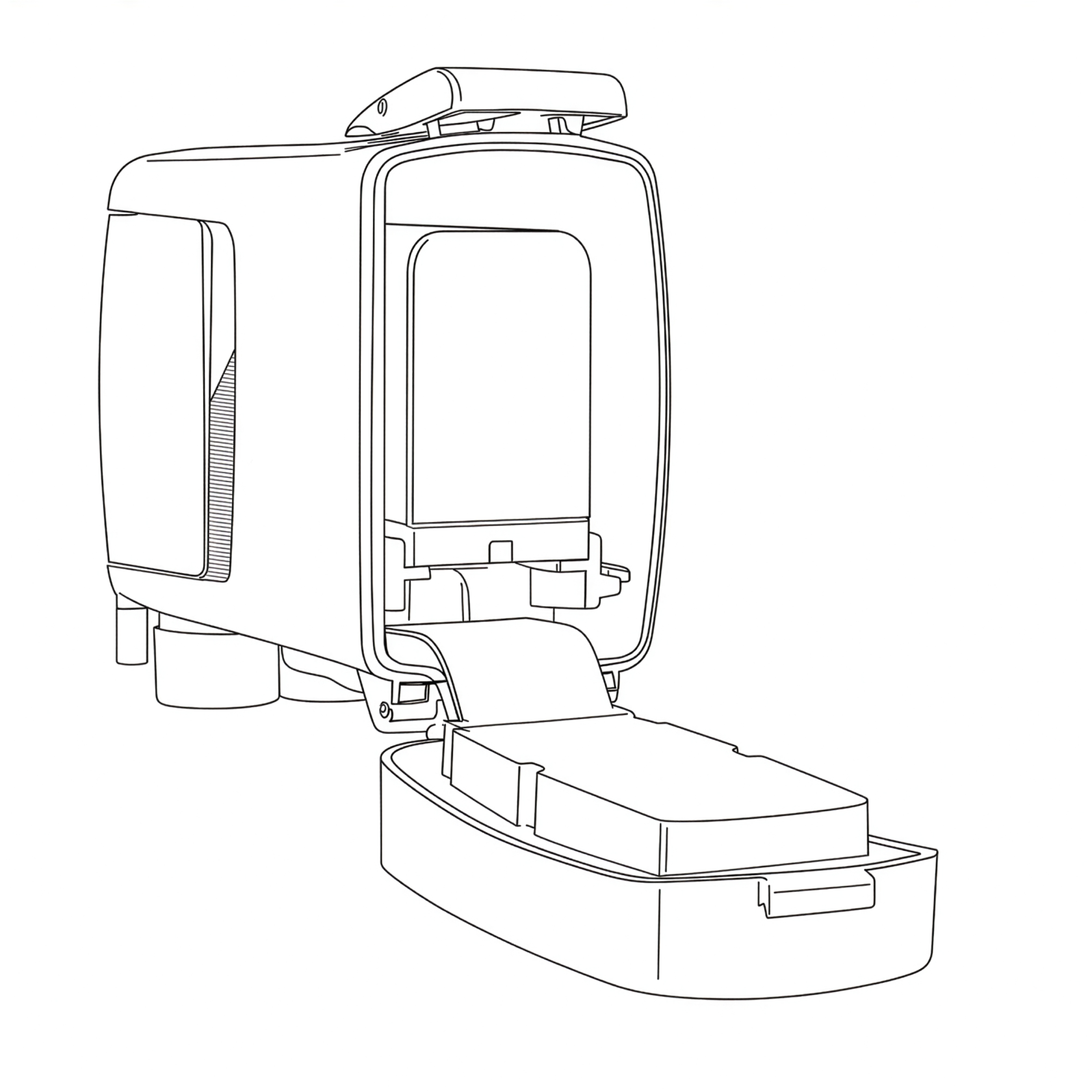Powering Your Sensor
The Camtraptions PIR Sensor v4 can be powered in several different ways, offering flexibility for a wide range of field conditions and setup durations.

1. NPF-Type Rechargeable Battery
The primary power option is a Sony-type NP-F lithium-ion battery, a widely available and reliable standard used across the photographic industry. The PIR v4 is compatible with NP-F batteries up to the size of an NP-F970 and with a maximum height of 60mm. Note that some third-party manufacturers produce NP-F batteries with built-in USB-charging ports that exceed this height and will not fit inside the sensor.
NP-F batteries are sold separately, as they are easy to source locally from most camera or video equipment suppliers. Place the battery into the battery tray, about 1cm away from its fully engaged position. Apply slight downward force to ensure that the central locking tab in the battery tray is fully depressed and, at the same time, push the battery forward until it clicks into place.
To remove the battery, simply pull it backwards.
2. AA Battery Adapter
As an alternative, the sensor can be powered using six AA batteries installed in a 6xAA to NP-F battery adapter (sold separately). The adapter fits into the same mounting slot as the NP-F battery. This option provides flexibility in situations where rechargeable lithium batteries are not available or convenient to use.
To install, insert the adapter in the same way as an NP-F battery, ensuring it is seated securely before closing the rear door. The individual AA cells may be removed/inserted while keeping the adapter in-situ inside the PIR v4, or alternatively the entire adapter can be removed in the same way as an NP-F battery.
3. External DC Power Input
For extended deployments or fixed installations, the sensor can also be powered via the DC input jack located on the underside of the unit. The sensor accepts DC input voltages from 4V to 12V.
For added reliability in the field, the sensor is compatible with Camtraptions Waterproof Screw-lock DC connectors, which provide a more secure and weather-resistant connection.
Ensure that any internal battery is removed from within the PIR v4 before an external battery or power source is connected to the sensor. Internal batteries cannot be connected and used at the same time as an external power supply. The only exception to this is if you are connecting a small external solar panel to trickle charge 6x Ni-MH AA batteries inside the PIR v4.
